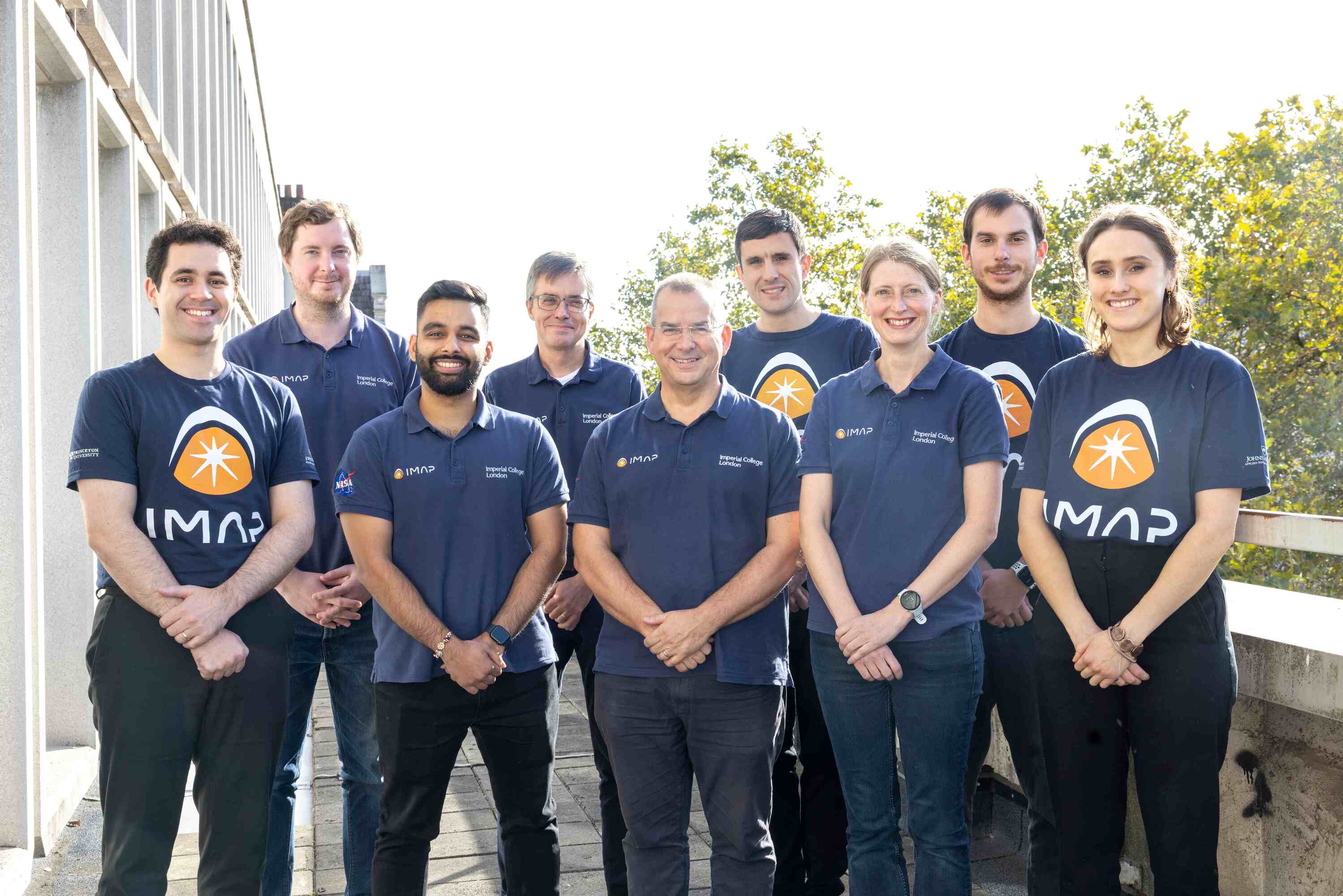
The Interstellar Mapping and Acceleration Probe (IMAP) is a NASA heliophysics mission that will simultaneously investigate the acceleration of energetic particles and the interaction of the solar wind with the local interstellar medium. The magnetometer instrument (MAG) lead by Imperial College, will join 9 other instruments, in a mission designed to answer fundamental questions about the place of our solar system in the surrounding interstellar medium.
The IMAP spacecraft is a sun-pointed spinning spacecraft, which will orbit about the Sun-Earth L1 point. IMAP’s ten instruments provide:
- Detailed observations of solar wind electrons and ions; suprathermal, pickup, and energetic ions; and the interplanetary magnetic field
- Data on the outer heliosphere interaction through global observations of the remote plasma and energetic ions over a broad energy range via energetic neutral atom imaging, and precise observations of interstellar neutral atoms penetrating the heliosphere
- Complementary observations of interstellar dust and the ultraviolet glow of interstellar neutrals
- A continuous broadcast of vital real-time space weather observations, from the L1 location, 1.5 million km upstream of the Earth
IMAP will carry a magnetometer designed and built at Imperial, which will be a direct development of that flying on Solar Orbiter.

Facts
- Launch Date: Planned for 2025
- Orbit: Halo orbit around the Sun-Earth L1 point, 1.5 million km upstream of Earth in the solar wind
- Mission Duration: 1 year
- Imperial College involvement: Lead, magnetometer instrument (MAG)
- MAG: Dual fluxgate sensors; electronics box and power supply developed in the Space Magnetometer Laboratory (link:
- Science Lead: Prof. Tim Horbury, Imperial College London
- Instrument Manager: Ms Helen O'Brien, Imperial College London
- Funding Agency: UKSA
External Links
Useful Links
IMAP Links: